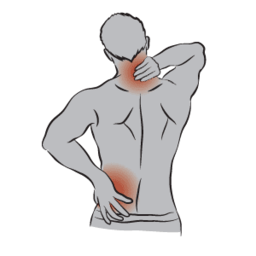
1. Acupuncture
Originating from ancient Chinese medicine, acupuncture has stood the test of time as a powerful tool for pain relief. This practice involves inserting thin needles into specific points on the body, which are believed to stimulate the body’s natural painkillers—endorphins. Research has shown acupuncture to be particularly effective for chronic pain conditions such as arthritis, migraines, and lower back pain. By balancing the body’s energy, or “qi,” acupuncture helps alleviate pain and promotes overall wellness.
2. Herbal Remedies
Herbs have been used for centuries to treat pain, and many of these remedies are still popular today. For instance, turmeric, known for its anti-inflammatory properties, is often used to pain relief to arthritis and other inflammatory conditions. Another powerful herb is willow bark, which contains salicin, a compound similar to aspirin, making it effective for relieving headaches and back pain. Additionally, capsaicin, derived from chili peppers, can be applied topically to reduce nerve, muscle, and joint pain.
3. Mind-Body Techniques
The connection between the mind and body is undeniable, and practices that focus on this relationship can be incredibly effective for pain management. Techniques such as meditation, mindfulness, and deep breathing exercises help in reducing the perception of pain by calming the nervous system. These methods not only help with immediate pain relief but also address the emotional and psychological aspects of chronic pain, which are often overlooked.
Yoga and Tai Chi are particularly noteworthy as they combine physical movement with mindfulness. These practices improve flexibility and strength, reduce stress, and promote relaxation—all of which can contribute to pain relief. Studies have shown that regular practice of yoga or Tai Chi can significantly reduce pain in conditions like fibromyalgia, arthritis, and chronic back pain.
4. Massage Therapy
Massage therapy is a time-honored method for relieving pain, especially in muscles and joints. By manipulating the soft tissues of the body, massage improves circulation, reduces muscle tension, and promotes relaxation. There are various types of massage, including Swedish, deep tissue, and trigger point therapy, each offering unique benefits. Regular massages can help manage chronic pain conditions, reduce the intensity of headaches, and alleviate the discomfort associated with conditions like sciatica and fibromyalgia.
5. Chiropractic Care
Chiropractic care is another effective holistic approach to pain relief, particularly for musculoskeletal issues. Chiropractors use spinal adjustments and other manual techniques to align the body’s musculoskeletal structure, particularly the spine, to enable the body to heal itself without surgery or medication. This approach is particularly beneficial for back pain, neck pain, and headaches. Regular chiropractic adjustments can help prevent pain from recurring by maintaining proper alignment and promoting overall spinal health.
6. Diet and Nutrition
What you eat can have a profound effect on pain levels. An anti-inflammatory diet, rich in fruits, vegetables, lean proteins, and healthy fats, can help reduce chronic pain, especially related to inflammation. Omega-3 fatty acids, found in fish and flaxseed, are particularly beneficial for reducing inflammation in conditions like arthritis. On the other hand, avoiding processed foods, sugars, and trans fats can help prevent inflammation and subsequent pain.
In addition to specific dietary choices, staying hydrated is crucial. Dehydration can lead to muscle cramps and exacerbate pain. Incorporating supplements like magnesium, which is known for its muscle-relaxing properties, can also support pain management.
7. Essential Oils and Aromatherapy
Aromatherapy, the use of essential oils for therapeutic purposes, is another holistic approach to pain relief. Oils like lavender, peppermint, and eucalyptus have pain-relieving properties and can be used in massage, baths, or diffusers. For instance, lavender oil is known for its calming effects and is particularly effective in relieving headaches and muscle pain. Peppermint oil, with its cooling sensation, is excellent for tension headaches and sore muscles.
8. Physical Therapy
Physical therapy is a cornerstone of holistic pain management, particularly for those recovering from injuries or surgery. A physical therapist designs a personalized exercise plan that helps strengthen muscles, improve flexibility, and restore movement. The goal is to address the root cause of pain, whether it’s due to muscle weakness, joint stiffness, or improper posture, and to teach patients how to manage and prevent pain in the long term.
Conclusion
Holistic approaches to pain relief offer a natural, often effective alternative to conventional pain management strategies. While these methods may not provide instant relief like some medications, they address the underlying causes of pain, promote overall health, and reduce the risk of side effects. Incorporating holistic practices into your pain management routine can lead to not only reduced pain but also an improved quality of life. Whether through acupuncture, herbal remedies, mind-body techniques, or dietary changes, embracing these natural pathways can empower you to take control of your pain and your well-being.